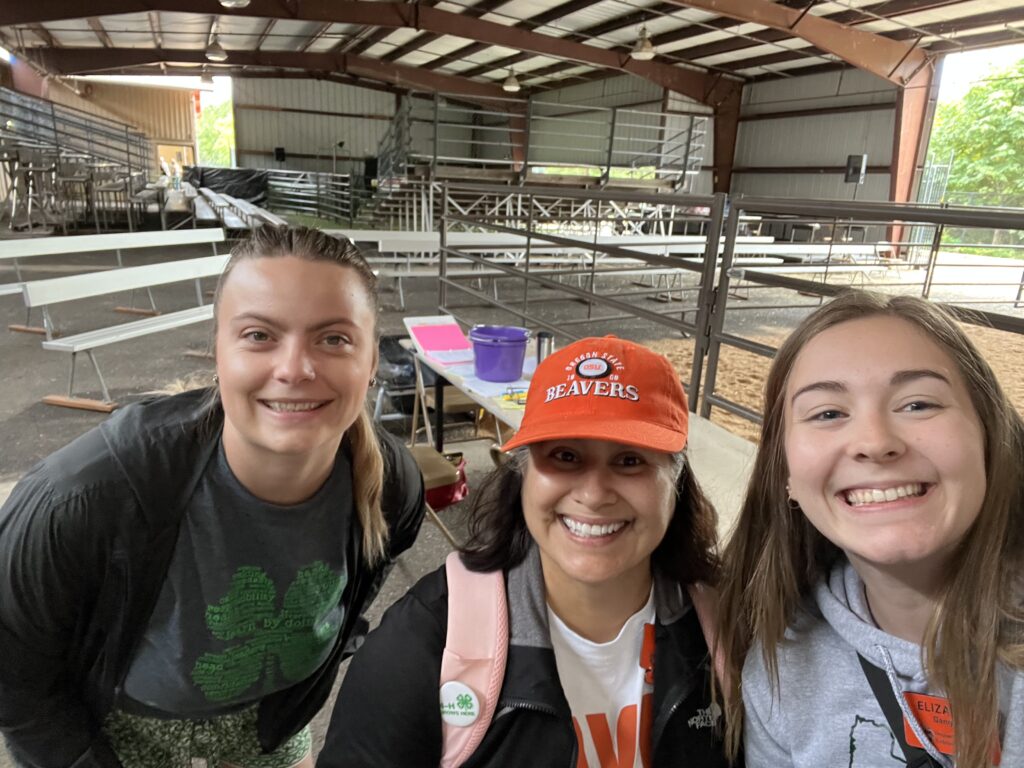Hi, everyone my name is Celilo Brun and I am wrapping up the last week of my internship with OSU Extension in Wallowa County. This summer was unlike the rest. Usually, I spend the majority of my summer at the lake, but instead I got to spend it giving back to the future generations in agriculture through 4-H members. When I was in 4-H I got to experience everything that 4-H offered, from showing cattle to taking a photography class. I did it all. Even though I had these amazing experiences my mission wasn’t over. I wanted to make sure other youths got to have these amazing experiences in 4-H, like I did. As I sit here and reflect on the past few months, I realized that I accomplished my mission of giving back.

Throughout my internship I was fortunate enough to meet many amazing individuals that aided in my growth. They showed me their most authentic, giving and caring selves. They all have roles in 4-H. Leaders, volunteers, Extension agents and staff, parents and the community all have an open hand and heart when it comes to 4-H. They are willing to do anything for these members because they know that they will give back to the community in many ways. Observing these individuals’ passion for 4-H and the youth was a beautiful sight to see, even if these individuals didn’t know it. Once I saw the passion flow, I knew it was time to start giving back.
While most of my internship was spent behind the scenes creating flyers, posters and fun interactive content for youths. I was able to go out and interact with the youth in various ways, including:
- Free Summer Lunch Program
- Eastern Oregon Livestock Show
- Tri-County 4-H Camp
- Leaders’ meetings
- Putting on a cattle fitting clinic
- Wallowa County Fair

There are many more ways that I have interacted with youth not listed above. These experiences allowed me to reflect on all of the great memories, lessons and new skills that I had developed from similar experiences. When attending these events, I wanted to make sure I emphasized those skills and experiences that they gain from these opportunities. This is very valuable for them to recognize because usually it takes many years before they see the importance. Some of these skills include public speaking, communication, adaptability, and relationship building.
From being a 4-H’er to being a helping hand for 4-H’ers this has been a very meaningful experience and one that I will never forget. This wouldn’t have been possible without the support and guidance of many individuals. Thank you to all those individuals who made it possible. Everyone has shined their light into my life with their experience, passion, and love. Those lights have shined bright in my life and will continue to positively impact my life for many years to come.
I would also like to shout out all of the Extension staff in Wallowa County and all Extension programs across the state. Without Extension staff nothing we do would be possible. They are the secret superheroes that make 4-H and Extension programs so successful, and they aren’t always appreciated. My appreciation for all these individuals, parents, community members, and leaders have significantly grown thanks to this experience. I want to continue advocating for these individuals and the youth in agriculture. I can’t wait to watch the program flourish from the sidelines. Thank you!



